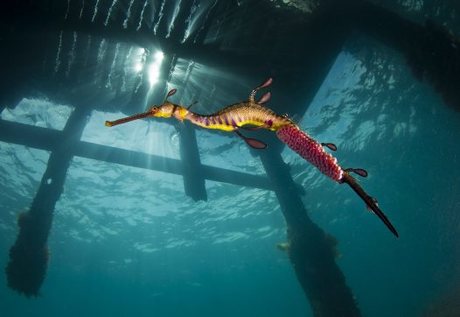2013 Eureka Prize winners

Excellence across research and innovation, leadership and commercialisation, science communication and photography has been recognised by the 2013 Australian Museum Eureka Prizes.
Invention
Dr Elliot Duff and colleagues at CSIRO won the ANSTO Eureka Prize for Innovative Use of Technology for their laser scanner that creates three-dimensional images of spaces that were previously impossible to map. Called Zebedee, the spring-mounted handheld scanner is able to survey enclosed spaces where GPS cannot reach, such as inside caves, mines, factories and public buildings, or beneath forest canopies.
Diamonds that light up the insides of cells have been created by the Quantum Bio-probes team from the University of Melbourne winning the University of New South Wales Eureka Prize for Excellence in Interdisciplinary Scientific Research.
Professors Steve Wilton and Sue Fletcher at Perth’s Murdoch University won the NSW Health Jamie Callachor Eureka Prize for Medical Research Translation for the development of a therapy for children with Duchenne muscular dystrophy. The researchers developed an exon skipping technique that overcomes the genetic defects these children have in the dystrophin gene, which codes for the dystrophin protein - a protein essential for muscle cells to retain their integrity. Children with this progressive muscle-wasting disease are regaining the ability to walk and potentially avoiding life-threatening complications thanks to this research.
Photography
Amateur photographer Richard Wylie, from Safety Beach in Victoria, won the New Scientist Eureka Prize for Science Photography for his stunning shot of a male Weedy Sea Dragon (Phyllopteryx taeniolatus) incubating eggs.
Second and third prizes were awarded in this category and the top 10 images can be seen online at the Australian Museum’s website.
Discovery
Research by the Enrich Project Team with the Future Farm Industries Cooperative Research Centre has won the Caring for our Country Landcare Eureka Prize for Sustainable Agriculture. The team’s research has played an integral role in showing that feeding livestock on native plants is the key to sustainable profits for Australian farmers. And farmers in dry parts of southern Australia are now planting native perennial shrubs to feed their animals.
Far from being vermin, Australian dingoes sustain biodiversity and can help land managers control invasive species, according to University of Tasmania Professor Chris Johnson and his colleagues. Professor Johnson and his team won the NSW Office of Environment and Heritage Eureka Prize for Environmental Research for showing that dingoes control kangaroo populations and supress foxes and feral cats. In this progressive approach to conservation, they’ve found that ecosystems with dingoes have better vegetation condition and more diverse and abundant populations of small native mammals.
Communication
Evolutionary biologist Professor Rick Shine from the University of Sydney won this year’s University of Technology, Sydney Eureka Prize for Outstanding Mentor of Young Researchers. An expert in Australian reptiles, Shine’s commitment to assisting young scientists is evident in his supervision of more than 70 research students and 20 postdoctoral fellows. The majority of his 800 published papers list his students as senior co-authors.
‘The hidden cost of flooding’, a radio report on levels of lead contamination found in flooded Queensland houses, won a 4th Eureka for the ABC’s Ian Townsend - the Australian Government Eureka Prize for Science Journalism.
More information is available on this year’s winners.
Specially designed peptides can treat complex diseases
Two separate research teams have found ways to create short chains of amino acids, termed...
Exposure to aircraft noise linked to poor heart function
People who live close to airports could be at greater risk of poor heart function, increasing the...
Predicting the impact of protein mutations with simple maths
Researchers have discovered that the impact of mutations on protein stability is more predictable...



